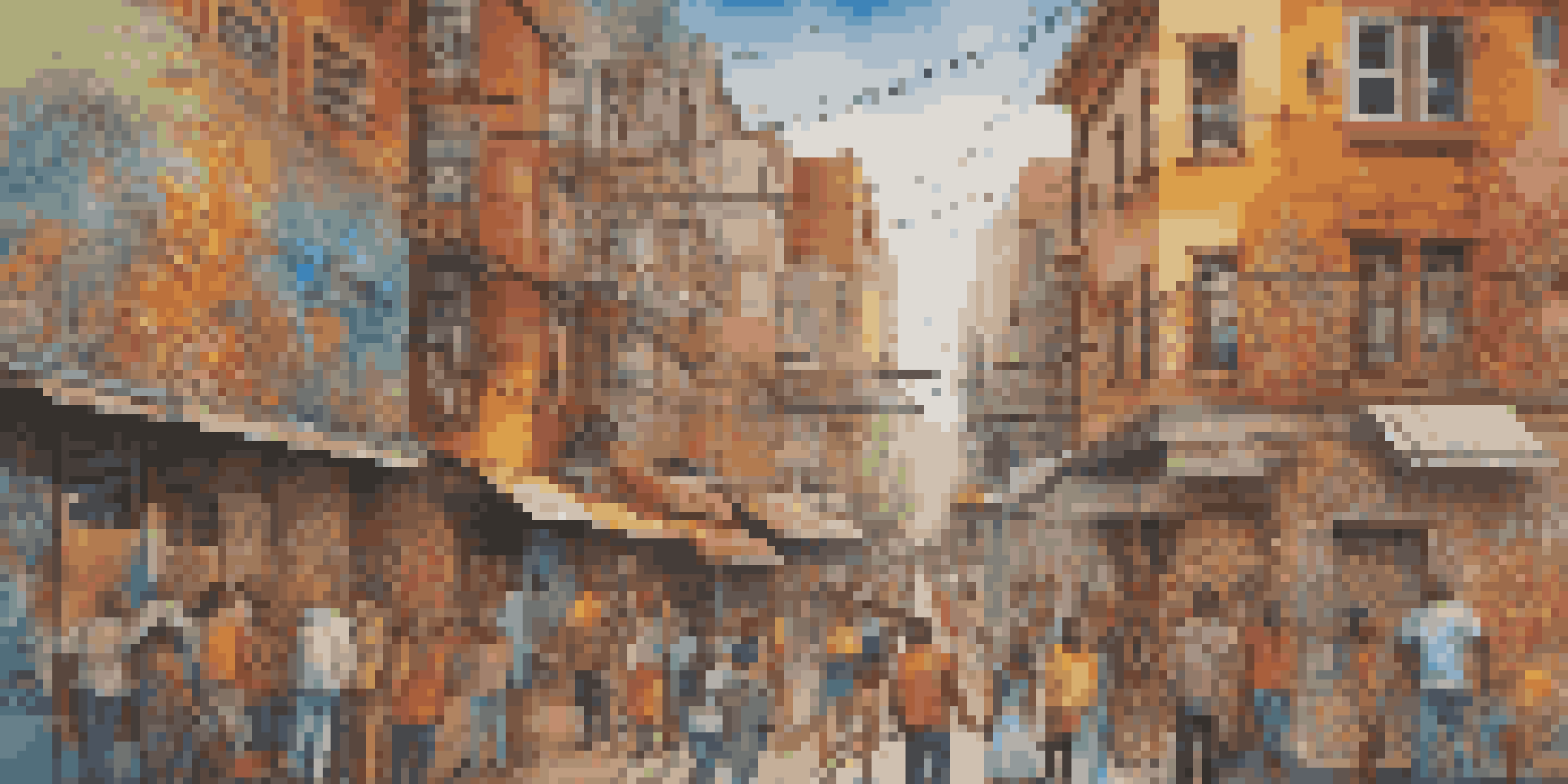Art and Migration: How Globalization Shapes Artistic Voices

Understanding the Intersection of Art and Migration
Art and migration are intertwined in complex ways, reflecting the movement of people and ideas across borders. When artists migrate, they carry their cultural heritage with them, infusing new environments with fresh perspectives. This blend of influences can lead to innovative artistic expressions that resonate with diverse audiences. By examining these connections, we can appreciate how migration enriches the global art scene.
Globalization: A Catalyst for Artistic Exchange
Globalization has accelerated the flow of ideas, allowing artists from different backgrounds to collaborate and share their work. Platforms like social media enable artists to showcase their creations to a global audience, fostering a sense of community despite geographical barriers. This interconnectedness not only broadens artistic horizons but also challenges traditional notions of cultural ownership. As artists engage with global narratives, they create works that reflect a shared human experience.
Art Enriches Through Migration
The movement of artists brings diverse cultural influences that enhance the global art scene.
The Role of Diaspora in Shaping Artistic Narratives
Diaspora communities often play a vital role in shaping the cultural landscape of their new homes. Artists within these communities draw on their experiences of displacement and belonging to create compelling narratives. For instance, many artists use their work to explore themes of identity, memory, and resilience, giving voice to the often-overlooked stories of migration. This storytelling not only preserves cultural heritage but also fosters empathy and understanding among diverse groups.
Art as a Reflection of Societal Changes
Art serves as a mirror to the societal changes brought about by migration and globalization. As communities evolve, so do their artistic expressions, often addressing pressing social issues like displacement, inequality, and cultural conflict. For example, street art has emerged as a powerful medium for marginalized voices, allowing artists to comment on their realities. Through this lens, we see how art not only reflects but also critiques the world around us.
Globalization Fuels Artistic Exchange
Globalization and technology enable artists to collaborate and share their work with a worldwide audience.
Challenges Faced by Migrant Artists
While globalization has opened doors for many artists, it also presents significant challenges. Migrant artists may struggle with issues like cultural misrepresentation, language barriers, and limited access to resources. These obstacles can hinder their ability to fully express their creativity and connect with wider audiences. However, many artists persevere, using their unique experiences to fuel their work and advocate for change.
The Influence of Technology on Artistic Migration
Technology plays a pivotal role in the migration of artistic ideas and practices. Digital tools and platforms have made it easier for artists to collaborate across borders, share their work, and engage with global audiences. This technological advancement has also democratized the art world, allowing previously marginalized voices to emerge. As a result, we witness a vibrant tapestry of artistic expression that reflects the complexities of our interconnected world.
Challenges for Migrant Artists
Migrant artists face obstacles like cultural misrepresentation and resource limitations, yet they continue to create impactful work.
Case Studies: Artists Bridging Cultures
Numerous artists exemplify the impact of migration on their work, bridging cultural divides through their art. For instance, renowned painter Kehinde Wiley integrates elements of African heritage with classical European portraiture, challenging traditional art narratives. Similarly, filmmaker Wong Kar-wai incorporates his Hong Kong roots into his films, creating universal stories that resonate globally. These examples highlight how migration fosters a rich exchange of ideas, leading to groundbreaking artistic innovations.
Looking Ahead: The Future of Art in a Globalized World
As we move forward, the relationship between art and migration will continue to evolve. Globalization promises to further amplify diverse artistic voices, creating an even more vibrant cultural landscape. However, it is essential to remain mindful of the challenges faced by migrant artists and ensure that their contributions are recognized and valued. By embracing the richness of these narratives, we can cultivate a more inclusive and dynamic art world for future generations.